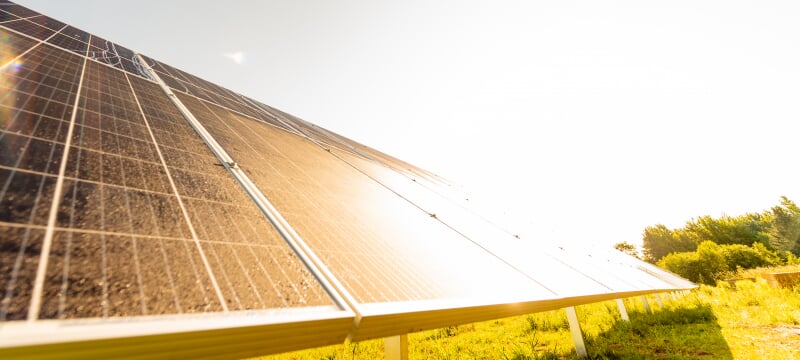Solar Cells: Back to the Basics, Forward to the Future – Michigan Technological University

Advancing Sustainable Energy Solutions through Quantum Dot Solar Cells
Introduction
To sustainably power the growing digital infrastructure and meet the increasing global electricity demand, efficient renewable energy sources are essential. Researchers at Michigan Technological University have pioneered a breakthrough in solar energy technology by developing highly efficient quantum dot (QD) solar cells. This innovation aligns with the United Nations Sustainable Development Goals (SDGs), particularly SDG 7 (Affordable and Clean Energy) and SDG 9 (Industry, Innovation, and Infrastructure).
Background and Challenges in Solar Energy
Traditional commercial solar cells rely on costly single-crystal silicon, which poses scalability challenges for large-area applications. Over the past two decades, efforts have focused on nanostructured electron transport layers (ETLs) to enhance electron flow. However, this approach has inadvertently increased interface defects, reducing overall solar cell performance. Quantum dot-based solar cells offer a promising alternative due to their cost-effectiveness and scalability but have faced efficiency losses and material defects.
Research Approach and Methodology
- Focus on Material Quality: Michigan Tech researchers, led by Professor Yoke Khin Yap, shifted focus from structural complexity to improving thin film quality in solar cells.
- UV Pulsed-Laser Deposition (PLD): The team employed a UV laser technique to fabricate higher-quality thin films for both electron transport layers (ETL) and hole transport layers (HTL), essential for efficient energy flow.
- Material Selection: The solar cells utilize cadmium selenide quantum dots to capture sunlight, zinc oxide as the ETL, and molybdenum trioxide as the HTL. These materials were chosen for their stability against humidity, enhancing real-world applicability.
Key Findings and Performance
- The UV PLD method produced thin films with fewer defects, minimizing charge trapping and improving electron transport.
- The developed quantum dot solar cells achieved an 11% conversion efficiency using only one type of quantum dot.
- Potential exists to double this efficiency by incorporating additional quantum dot types, potentially surpassing commercial solar panel performance.
Implications for Sustainable Development Goals
- SDG 7 – Affordable and Clean Energy: The research contributes to affordable, scalable, and efficient solar energy technologies, promoting access to clean energy worldwide.
- SDG 9 – Industry, Innovation, and Infrastructure: By innovating in material science and solar cell design, the study advances sustainable industrial technologies and infrastructure.
- SDG 13 – Climate Action: Enhancing renewable energy efficiency supports global efforts to combat climate change by reducing reliance on fossil fuels.
Future Research Directions
Building on the success of the single-dot system, future studies will focus on integrating multiple types of quantum dots while maintaining high electrical transport efficiency. The UV PLD technique also enables the formation of various nanostructures and quantum materials at room temperature, offering further avenues for innovation.
Support and Recognition
- The research is supported by Michigan Tech’s Elizabeth and Richard Henes Center for Quantum Phenomena and the Jim ’66 and Shelley Williams Applied Physics Annual Fund.
- The published article was featured as a supplementary cover graphic in ACS Applied Energy Materials, highlighting its significance in the field.
About Michigan Technological University
Michigan Technological University, an R1 public research institution founded in 1885, enrolls nearly 7,500 students from over 60 countries. The university offers more than 185 undergraduate and graduate programs across science, technology, engineering, and other disciplines. Located near Lake Superior in Michigan’s Upper Peninsula, the campus fosters innovation and sustainability, contributing to global development goals.
1. Sustainable Development Goals (SDGs) Addressed or Connected
- SDG 7: Affordable and Clean Energy
- The article focuses on developing highly efficient quantum dot solar cells, which contribute to increasing the availability and efficiency of renewable energy sources.
- SDG 9: Industry, Innovation and Infrastructure
- The research involves innovative solar cell design and advanced materials science, promoting sustainable industrialization and fostering innovation.
- SDG 13: Climate Action
- By advancing renewable energy technologies, the article supports efforts to reduce greenhouse gas emissions and combat climate change.
2. Specific Targets Under Those SDGs
- SDG 7: Affordable and Clean Energy
- Target 7.2: Increase substantially the share of renewable energy in the global energy mix.
- Target 7.3: Double the global rate of improvement in energy efficiency.
- SDG 9: Industry, Innovation and Infrastructure
- Target 9.4: Upgrade infrastructure and retrofit industries to make them sustainable, with increased resource-use efficiency and greater adoption of clean and environmentally sound technologies and industrial processes.
- Target 9.5: Enhance scientific research, upgrade the technological capabilities of industrial sectors.
- SDG 13: Climate Action
- Target 13.2: Integrate climate change measures into national policies, strategies, and planning.
3. Indicators Mentioned or Implied to Measure Progress
- SDG 7 Indicators
- Proportion of energy from renewable sources in total final energy consumption (related to Target 7.2).
- Energy intensity measured in terms of primary energy and GDP (related to Target 7.3).
- Solar cell conversion efficiency percentage (implied by the article’s focus on improving efficiency from 11% and potential doubling).
- SDG 9 Indicators
- Research and development expenditure as a proportion of GDP (related to Target 9.5).
- Number of patents filed in clean energy technologies (implied by innovative quantum dot solar cell research).
- SDG 13 Indicators
- Greenhouse gas emissions per unit of GDP (implied by the shift to renewable energy technologies).
4. Table of SDGs, Targets, and Indicators
| SDGs | Targets | Indicators |
|---|---|---|
| SDG 7: Affordable and Clean Energy |
|
|
| SDG 9: Industry, Innovation and Infrastructure |
|
|
| SDG 13: Climate Action |
|
|
Source: mtu.edu








